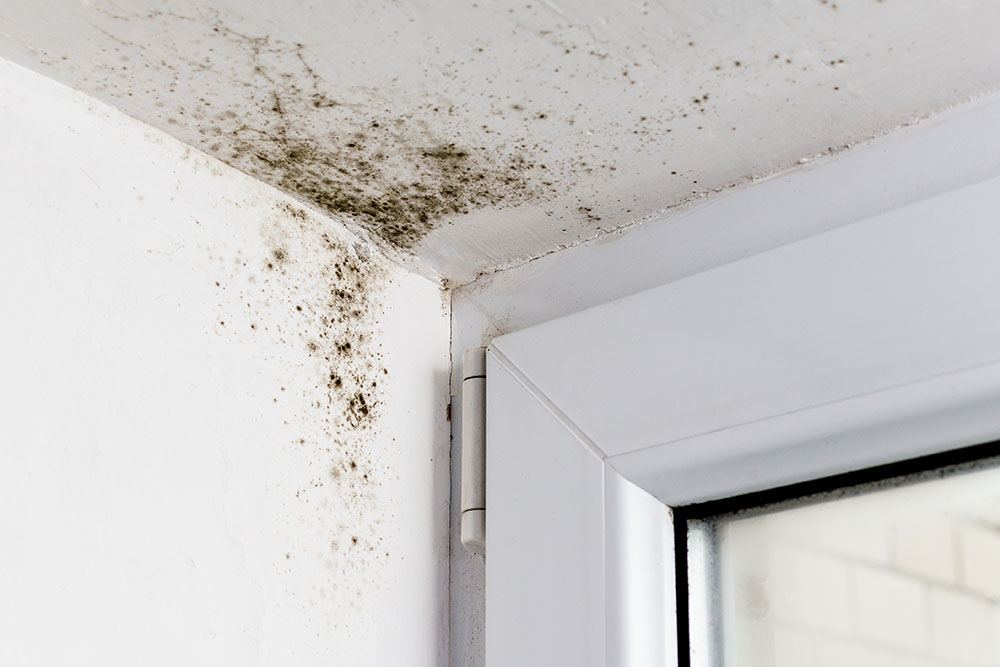Should You Be Worried About Mould In Your Home?

CONTENTS
- What is mould?
- What are the health risks of mould?
- Why are mould cases increasing?
- How to spot the signs of mould
- What to do if you have mould in your home
- Get in touch
As of February 2023, there was a reported increase in mould cases across homes in England. This is unsurprising as the UK is a humid and wet country, and we may see this continue for a few more months.
At ICE Cleaning, our Dewpoint-accredited technicians provide thorough mould remediation services. With our various treatments and lifetime guarantee*, we will ensure that the mould does not return.
Read on to learn more about mould and if you should be concerned about it growing in your home.
*subject to advisories
What is mould?
Mould is a dangerous type of fungus that grows in humid and damp conditions. It thrives indoors with warm air, moisture, and housing materials such as wallpaper and carpets to feed on. It is common to see it on the ceiling or walls as these often provide the best conditions for mould.
Mould can grow fast and spread to carpets and other fabric furnishings. Porous surfaces like grout and silicone also create a perfect environment for mould to grow and spread further.
There are several reasons why mould may grow in your home, and you should consider these factors when assessing your property:
- Rising damp
- Proper ventilation
- Humidity control
- Condensation build-up
What are the health risks of mould?
Those who are immunocompromised or suffer from asthma and allergies are more susceptible to symptoms caused by mould. However, it can affect anyone if exposed to large quantities of mould long enough.
The elderly and young children are especially vulnerable and should therefore be kept away from mould or have their rooms cleaned as soon as possible. However, if you attempt to clean the mould yourself you may only remove the surface and not kill it at the source.
Touching, inhaling, or ingesting mould can lead to symptoms such as:
- Congestion
- Irritated eyes
- Sneezing
- Coughing
- Sore throat
- Skin rash
- Headache
- Lung irritation
Why are mould cases increasing?
The recent cold weather in the UK, combined with the cost-of-living crisis, is the likely reason for this increase in mould cases. When a home is not well-heated or ventilated during cold and wet seasons, it becomes vulnerable to mould growth.
Those who are private renters or living in social housing are part of many mould cases in the UK. In this case, the occupants must report any instances to the renter and the landlord will be responsible for tackling the mould.
Property owners should ensure their homes are more energy efficient. You can check your home's Energy Performance Certificate and improve the rating to keep your home safe from mould. You can improve your EPC rating by:
- Installing insulation in walls, floor, and attic
- Using low-energy lights
- Insulating hot water cylinders
- Installing heating controls
- Upgrading to a condensing boiler
- Fitting double-glazed windows
How to spot the signs of mould
It can be easy to mistake mould for mildew, especially if you have not seen other signs in your home yet. However, they both share similar behaviours and appearances:
- Black, white, green, or brown in appearance
- Growing on the walls or ceiling
- Leaving damp marks on the walls or wallpaper
- Damp or musty smells
- High condensation on glass surfaces
What to do if you have mould in your home
Mould can quickly grow out of control and start destroying the inner walls and foundations of your home if left alone. It may have seeped into hard-to-reach places such as the inside of your walls, and if you see mould on the ceiling, it might be dangerous to try to reach it.
In the meantime, you should purchase a dehumidifier and ventilate your home to prevent further growth and capture the mould spores in the air. You can get an air purifier for your home to help with this.
As soon as you spot mould, you must contact a mould removal company instead of handling it yourself. If mould has contaminated your bedroom, you should avoid sleeping in that area and seek temporary accommodation until your property is decontaminated.
Get in touch
Our expert technicians at ICE Cleaning offer a mould removal service where they test mould samples in your home to determine the dangers. We will diagnose the root cause to stop it from returning, keeping your home safe.
Our technicians can be on-site within a matter of hours in an emergency and are available 24/7, 365 days a year. Call us on 0208 066 0360 or email us at enquiries@icecleaning.co.uk for a free, no-obligation quote today.

Speak with me today,
I’m here to help
By asking you a few questions either via phone or email I can immediately provide a realistic estimation of the cost.
You’re in good company. We’ve cleaned for the following commercial clients… View all

Why choose us?
- Cater to a wide variety of cleaning situations
- Nationwide coverage, available 24/7
- Cater to commercial and domestic clients
- Free survey provided prior to quotation
- Emergency response team
- Offer a bespoke service designed to suit all your needs
- All technicians hold professional health and safety qualifications, including BICSc, IOSH, Dewpoint Professional & Safe Contractor
We’re fully accredited
We place best practise, professional expertise and health and safety at the core of our business. We’re fully compliant with all legal obligations. You can view a list of our accreditations below, or visit our Health & Safety page for more information.











-RGB-small.1707319151.jpg)




















